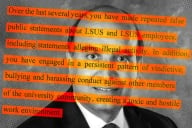You have /5 articles left.
Sign up for a free account or log in.

In a spring 2021 survey whose results were released last month, about a third of junior faculty members said they were “very likely” to extend their tenure clocks.
Original image by Andrii Yalanskyi/iStock/Getty Images | Photo illustration by Justin Morrison/Inside Higher Ed
In response to COVID-19, universities nationwide offered assistant professors the chance to extend their tenure clocks, giving them more time to make the case that they deserve tenure. These extensions were a way to account for the pandemic’s disruptions to faculty members’ work, but they have since become controversial, because research shows they can exacerbate disparities between men and women rather than lessen them.
Whether extensions are helpful or not, a spring 2021 survey finally published last month in a peer-reviewed journal shows that academics’ appetite for this option was significant—even if the poll doesn’t show how many faculty members ultimately took advantage of the chance.
About four in 10 assistant and associate professors at public research universities reported that the pandemic disrupted their research “a great deal,” compared to just a quarter of full professors, according to the article in Teachers College Record. And out of the roughly 1,100 junior faculty members in the survey, about a third said they were “very likely” to extend their tenure clocks, with another 12 percent saying they were “somewhat likely.”
The authors, from North Carolina State University, found that “men and women were equally likely to extend,” even though 40 percent of women reported “a great deal” of disruption compared to 29 percent of men. And “multiracial (52%) and Latino/a (58%) faculty were more likely to extend than White faculty (43%), with Black (38%) faculty least likely to”—even though there were no statistically significant differences among these racial and ethnic groups in how much research disruption they reported, the authors wrote.
There were, however, disparities among racial and ethnic groups, and between men and women, in the reasons faculty members said their research was disrupted. “Time spent moving instruction online” and “travel restrictions” were cited as top reasons across the board, but women were more likely than men to cite an “inability to focus attention,” “difficulty collecting data,” “health problems,” “childcare” and moving instruction online, whereas Black and Latino faculty members were more likely than white professors to point to “limited or no access to necessary data,” “challenges communicating with collaborators” and “health problems,” the authors found.
“The disruptions that women and faculty of color face are particularly troublesome,” they wrote. “If universities do nothing to reduce the disproportionate harm done to groups already underrepresented in the professoriate, it is reasonable to expect faculty of color and women faculty to depart higher education for an environment that treats them fairly.”
It’s been nearly four years since the pandemic began shutting down the U.S. But the new paper, “Effects of the Pandemic on Faculty at Public Research Universities,” says it’s “the first national survey of research university faculty on the effect of the COVID-19 pandemic on research productivity and tenure and promotion plans.”
“This kind of work is hard to do,” said Paul Umbach, a professor of adult and lifelong education and the article’s lead author. “Just getting the email addresses takes a lot of time.”
The authors said they randomly sampled 100 Carnegie-classified R-1 or R-2 (“very high” or “high” research activity) public universities, requested public records from each for faculty email addresses and other information, and then surveyed academics at 31 universities that responded to the records requests. Umbach said these universities included Florida Atlantic University, the University of Colorado at Boulder and the University of California, San Diego, among others.
Over all, 3,970 full-time tenure-track or already-tenured faculty members filled out enough of the survey to be counted as respondents, a sample that’s “representative of public research universities in the United States, with a slight overrepresentation of assistant professors and female faculty,” the authors wrote.
Tenure-track academics face tenure review, on average, around the sixth year of their probationary period, according to a 2022 American Association of University Professors survey. Amid the pandemic, nearly 98 percent of 132 R-1 institutions “offered a published COVID-19 tenure delay policy,” according to a peer-reviewed 2022 article in Advance Journal.
Some faculty members may fear stigma from colleagues if they extend their tenure clocks. But when the authors of the new paper asked the already-tenured faculty members how supportive they would be of their junior co-workers extending their tenure clocks, 87 percent said they were “very supportive.”
Support differed among men and women and racial groups, but backing was nevertheless high among all demographics. Among already-tenured faculty members, 91 percent of women were very supportive, as were 84 percent of men. Ninety-five percent of Black tenured faculty members were very supportive—even though Black assistant professors were the least likely among assistant professors to say they would accept an extension.
Tenure clock extension options existed in limited cases before COVID-19, such as for the birth of a child, but the pandemic saw universities offer them broadly. Joya Misra, Provost Professor of Sociology and Public Policy at the University of Massachusetts at Amherst and current president of the American Sociological Association, said she thinks that the “automatic tenure delays” offered by some universities, where a faculty member must decide to opt out rather than have to opt in, have been beneficial.
But she expressed some concern about delays lasting over a year and the thought process she’s seen behind them; the new study doesn’t get into multiyear delays, but some universities have offered them.
On her campus, Misra said, departments that “kind of like encouraged their faculty to take additional tenure delays” tended to be those that wanted tenure candidates’ records to look “exactly like” those of successful pre-pandemic candidates. She said that, due to disruptions to some candidates’ work, “there’s no real way to assess them as if a pandemic didn’t happen.”
“I do think that tenure delays can be useful,” she said. “I also think that tenure delays can be overused.” When assessing whether someone will be a good teacher and productive researcher, she said, “if we can make that assessment without their having to take, you know, three years of tenure delays, maybe we should make that assessment.”
Misra said she helped develop the concept of “pandemic impact statements” and has advocated for universities to consider them when evaluating tenure candidates’ records. She said the pandemic is just one more “context” to consider when evaluating faculty members, similar to considering teaching loads when assessing research output or bias when assessing students’ teaching evaluations.
“We should evaluate faculty based on the context in which they’ve worked,” she said.
Heidi Blackburn, a George Mason University Libraries computing librarian who published a literature review of pandemic-era studies on women in science, technology, engineering and math, said, “These extensions actually negatively impact women in the long run.”
“When you take that clock stop, you then set yourself up to be at least a year behind, and then while you are stopped your male colleagues are applying for grants, they are taking on leadership roles and it is difficult to catch up,” she said.
Umbach noted that COVID-19 barred historians from accessing archives, for instance, and prevented scholars across disciplines from attending conferences to receive research feedback.
“This has career-long effects,” he said. Research involves “momentum,” and being “knocked out” or “slowed down” for a few years “can have dramatic effects on people’s productivity.”
The authors concluded that the causes of disruption “paint a bleak picture.”
“Beyond seemingly ubiquitous tenure clock extensions, it is not clear whether universities accounted for this or have found ways to remediate the effects on research because of the time spent moving classes online,” they wrote. “Faculty are likely still playing catch-up and perhaps should be awarded some relief from other duties to make up for time lost in research.”








